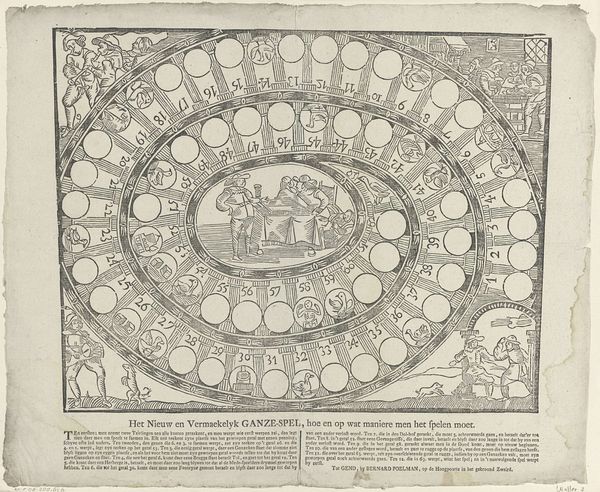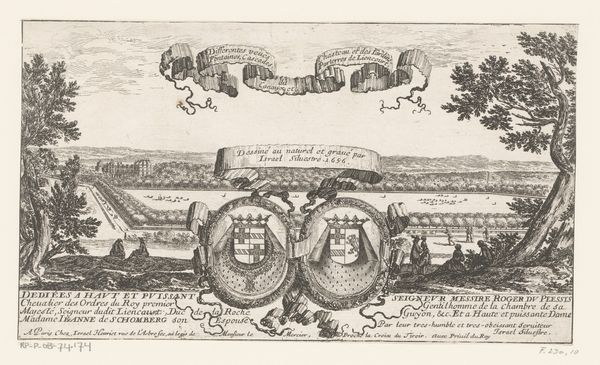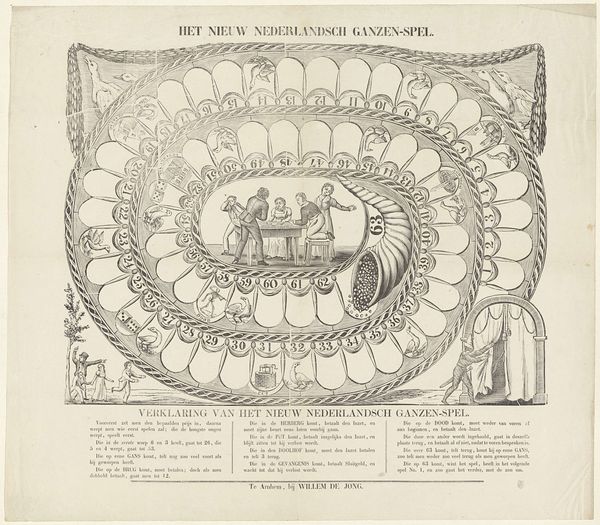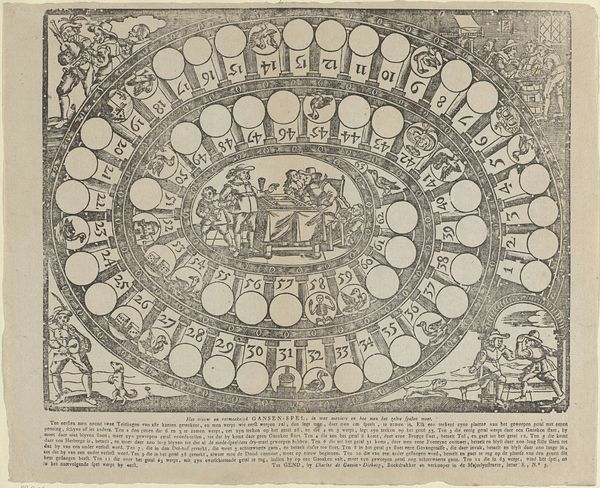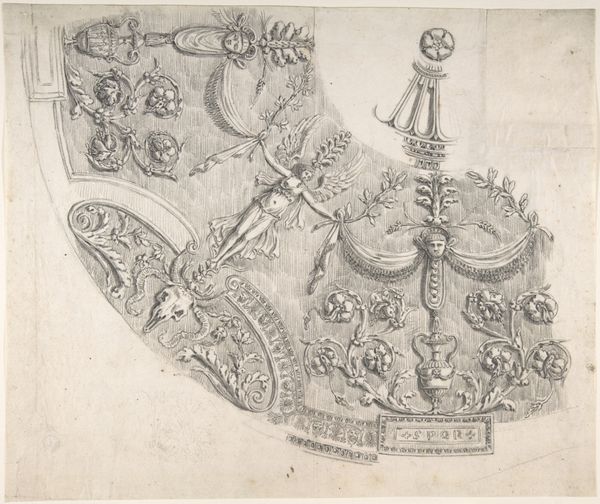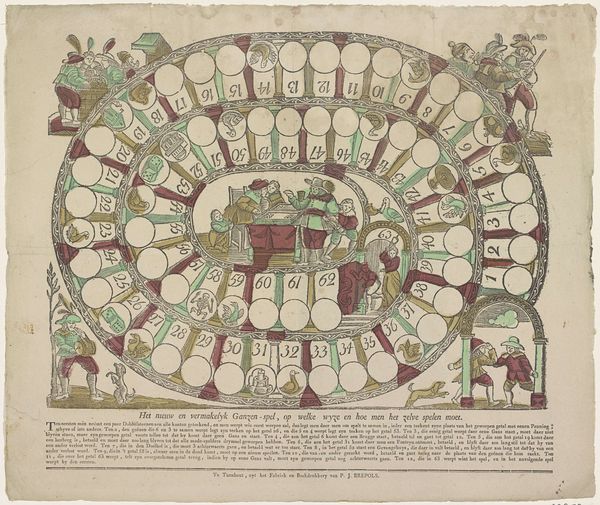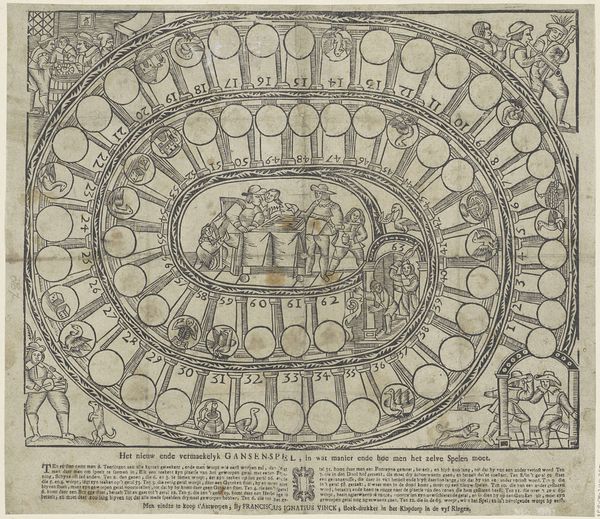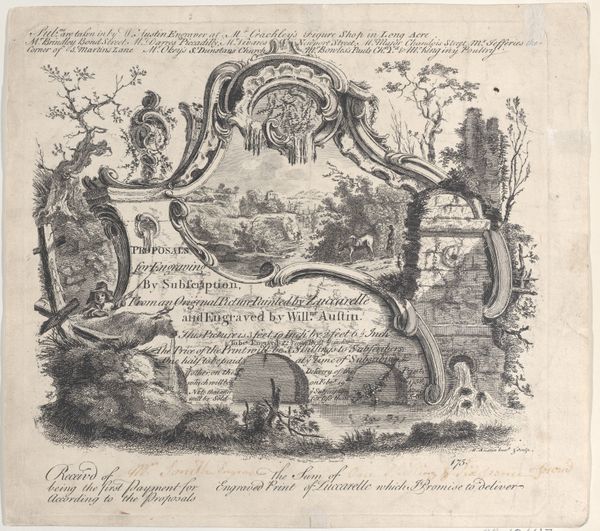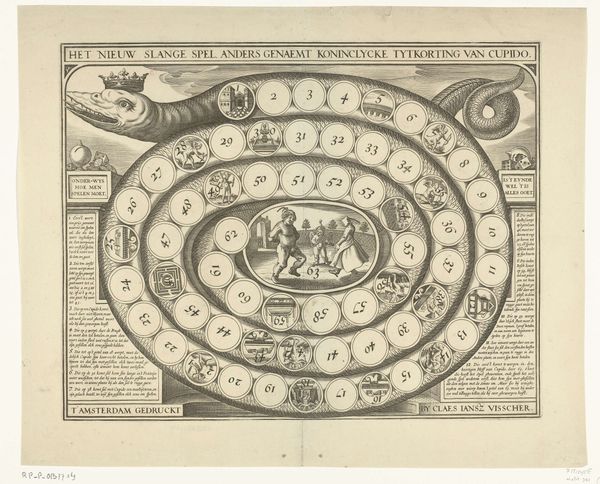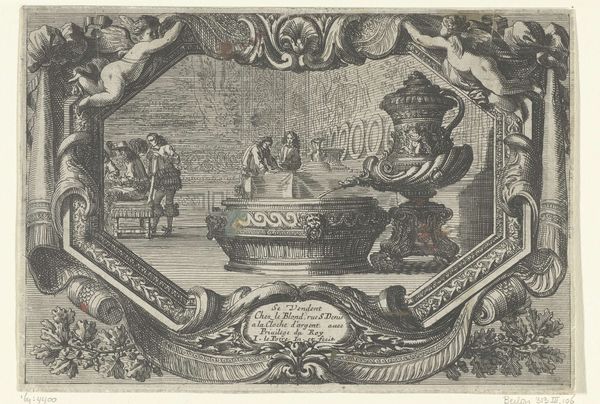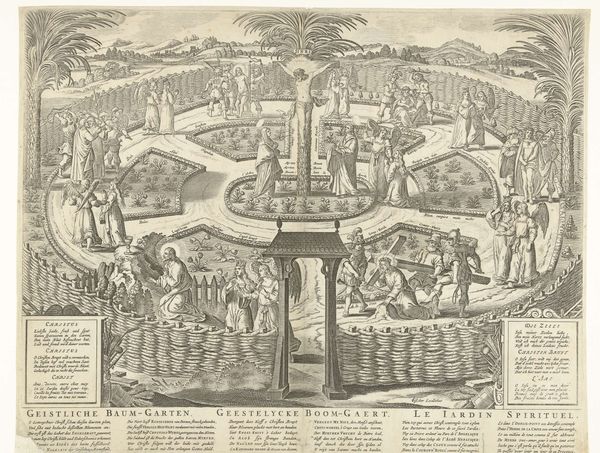
Dimensions: height 221 mm, width 254 mm
Copyright: Rijks Museum: Open Domain
Editor: This artwork, created between 1608 and 1630 by Michael Snijders, is an engraving titled "Ornament: Monogram van Maria: MRA opgebouwd uit Mariasymbolen," a monogram of Mary comprised of Marian symbols. It's intricate and definitely symbolic, with the letters themselves forming miniature scenes. What do you see in this piece? Curator: The layered symbolism is striking, isn’t it? We can explore this as a powerful example of visual rhetoric. Think about the historical context: the role of the Catholic Church, particularly the veneration of Mary, was undergoing significant upheaval during this period, particularly during the Counter-Reformation. How does this elaborate visual display of Marian symbols serve to reinforce or negotiate that power dynamic? Who do you think was the intended audience for this print and what message do you think they were intended to receive? Editor: It's interesting to think of it as an assertion of power through religious iconography, almost a branding strategy. So the symbolism wasn't just devotional; it was a statement. The details in each letter, and the overall composition with the radiating light...they all serve a persuasive purpose. Curator: Exactly. Each individual symbol functions within a larger narrative – a constructed, politically charged narrative. What are some of the symbols you recognise and what do they signify in this context? Thinking about how this imagery might reinforce certain gender roles of the time. Editor: I see the crescent moon, often associated with Mary, and what looks like a walled tower within the "A." Maybe those relate to purity and strength, upholding the virtues ascribed to her. That light emanating from the center really does seem to emphasize those concepts and promote those ideals in a particularly effective and engaging manner. I hadn't thought of it in terms of gender roles, but of course that plays a major part in the overall work and especially the cult of personality around her as a prominent, historical figure. Curator: Considering the intersection of faith, power, and gender allows us to appreciate the piece on a far deeper level than purely aesthetic enjoyment. These early modern prints can unlock surprising perspectives on societal pressures from centuries ago. Editor: I never thought about analyzing religious art with such a critical and analytical lens. It makes you appreciate the layers of meaning artists embedded in their work, and that continue to exert an influence even now.
Comments
No comments
Be the first to comment and join the conversation on the ultimate creative platform.

